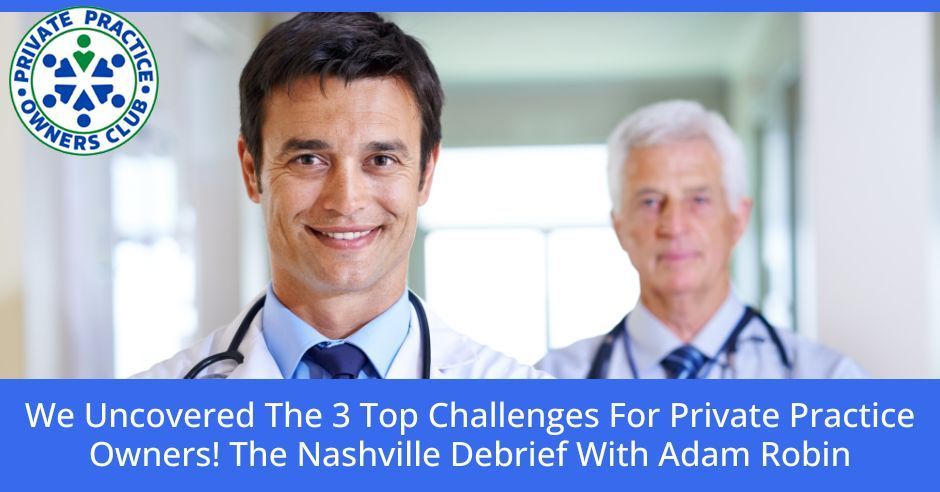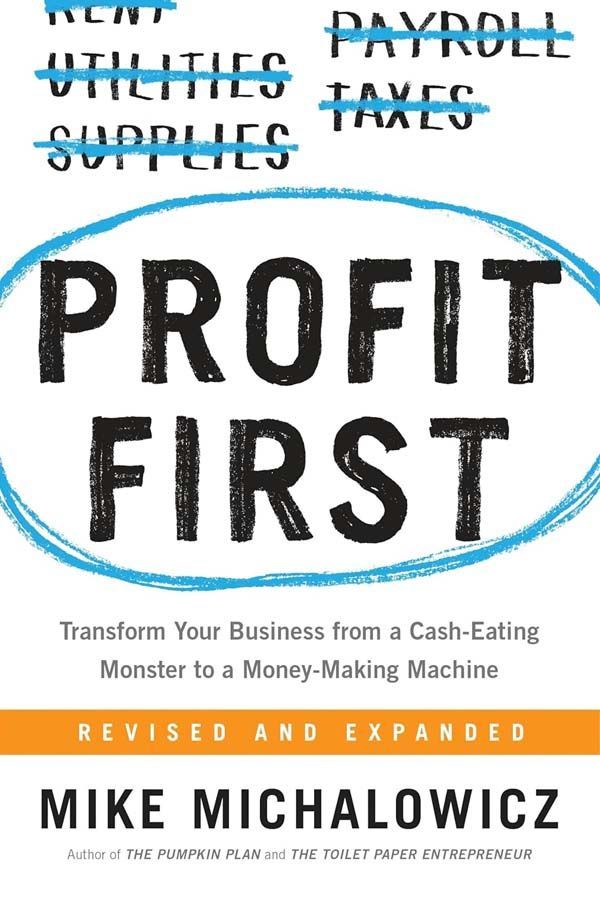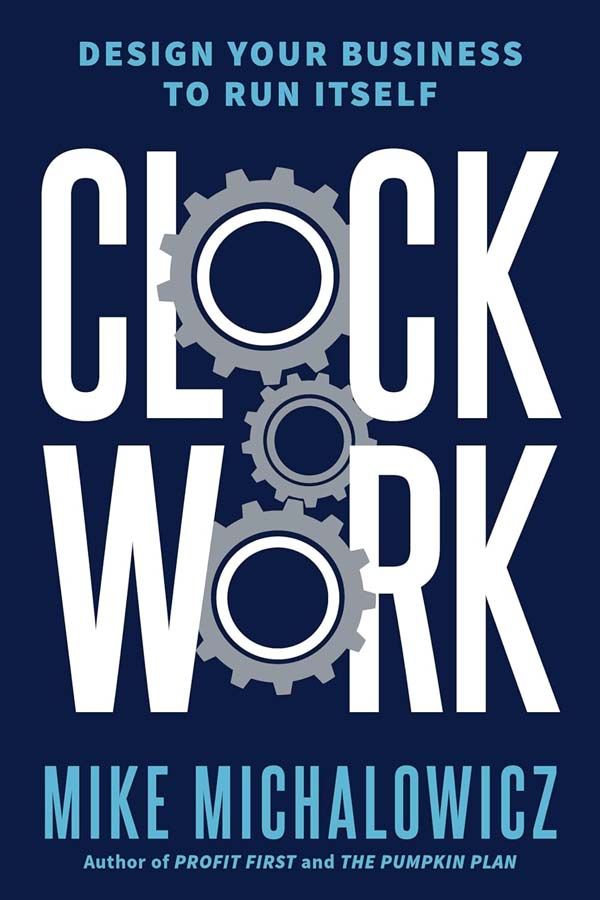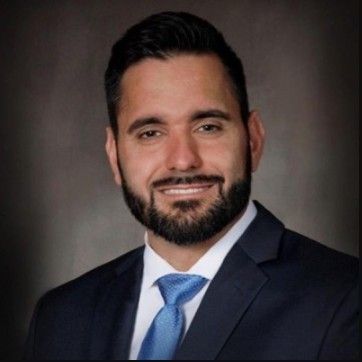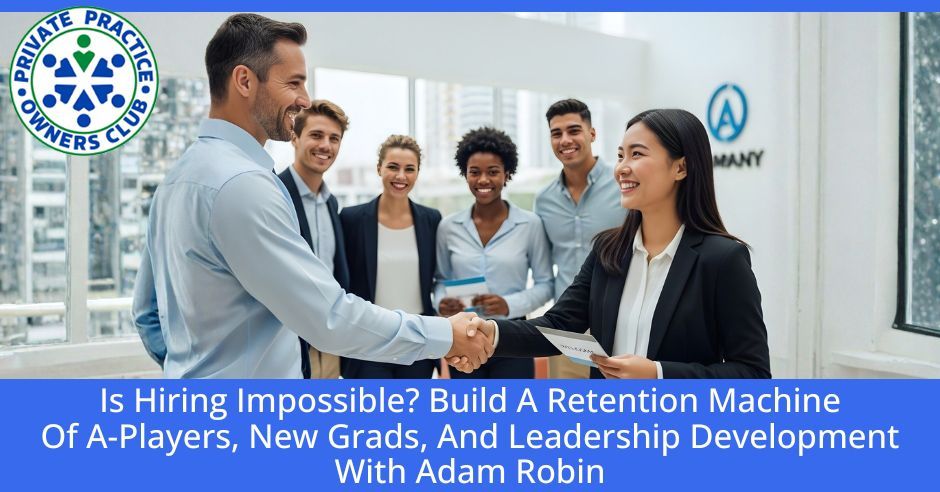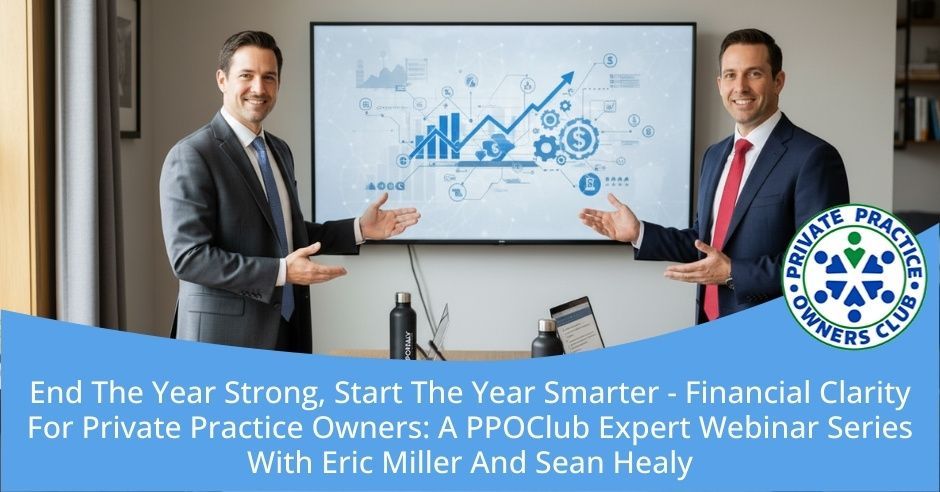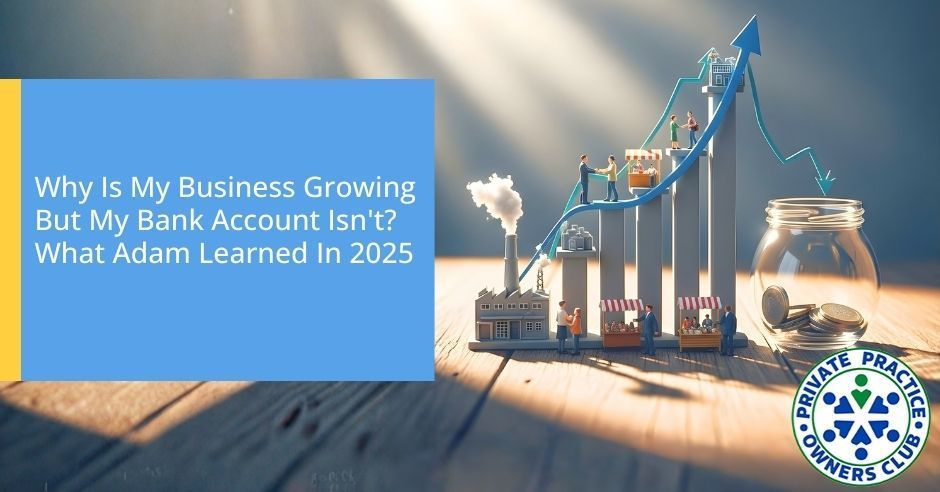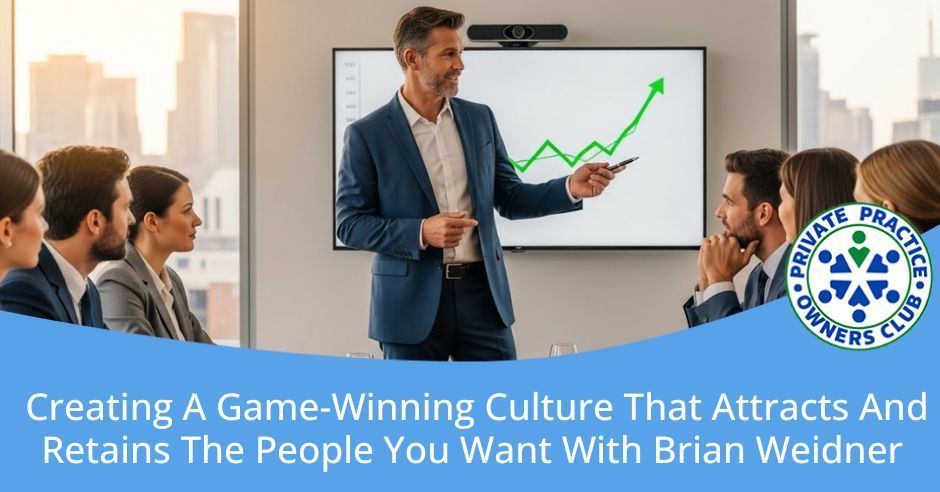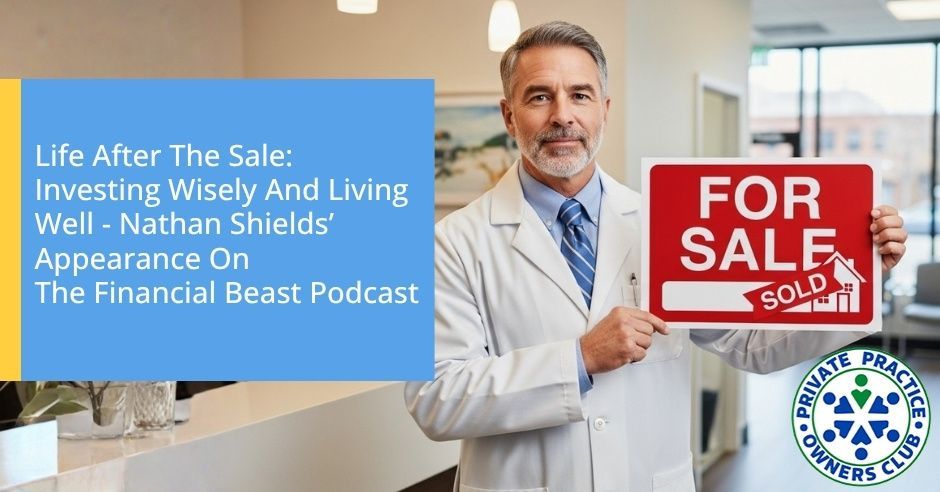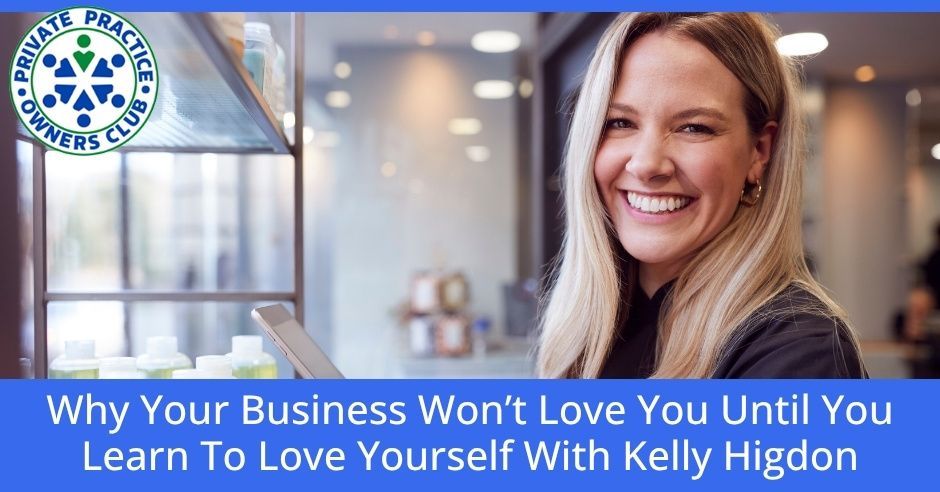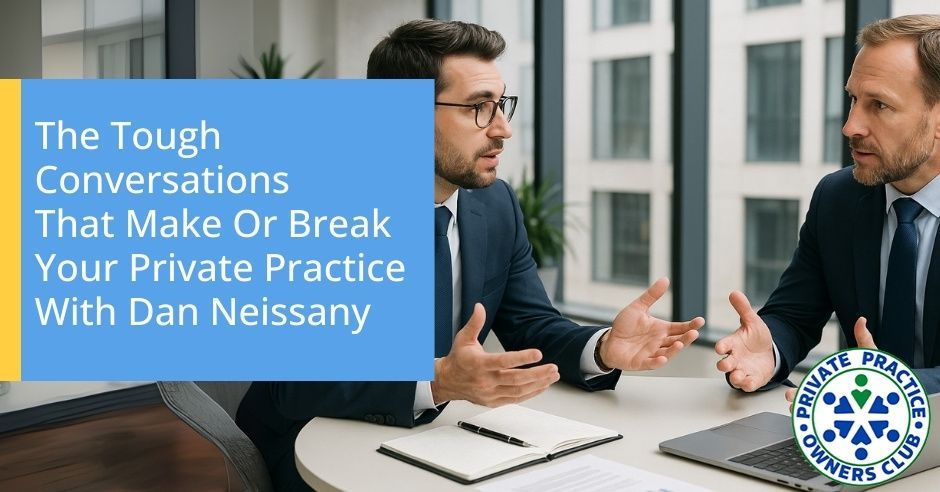Nathan Shields attended the Nashville Mastermind with members of the PPOClub this June. Adam Robin joins him in this insightful conversation about the things they have learned during the event, particularly the top three challenges currently faced by private practice owners. Tune in as they break down valuable tips about leadership development, talent recruitment, and time-focus management.
---
Listen to the Podcast here
We Uncovered The 3 Top Challenges For Private Practice Owners! The Nashville Debrief With Adam Robin
Welcome to the Private Practice Owners Club. Nathan Shields here, with my buddy, Adam Robin. How are you doing?
A little tired, but I'm pushing through.
Okay. We'll push through.
Let's push through. Let's go.
Looking Back To The Nashville Mastermind
That's right. We're going to figure this out. We got back from the Nashville Mastermind, and that was an awesome experience.
It was cool.
We had a client member-only Mastermind on Thursday and Friday. We opened it up to other owners on Saturday. We worked through a lot of stuff. Those half days that we did the mornings of Thursday and Friday, there was a ton of content packed into half a day. I can't imagine what that would've been like for a full day. They were already overwhelmed with half day of content. It was a great experience.
It was pretty awesome. It was cool to see the difference between the second workshop versus the first one. The one in New York was the first one that we ever did. It was good, but the first one is always like, you're doing a lot more learning than you are adding value. This one, I felt like the transformation in the room was at a much higher level.
It was cool to see us grow in our ability to be able to deliver that, too. I know there was one moment, I think it was at the end of the third day, where you and I were able to step away and chat about it a little bit. We looked up and there were people in the room, all the people who were attending, they were engaging, they were all on fire, talking about ideas and brainstorming. People were pulling out their laptops. I remember you looking at me and you were like, “This is why we're doing this. Look at what we did.” How cool is that?
That was a striking moment for me because, as a speaker, as the host, you think people might come up and have questions for you. They wanted nothing to do with you and me. There was a tinge of pride that was like, “No one wants to talk to me.” It was super fulfilling, more fulfilling to see them all networking. That's what you get out of those in-person events. We have to highlight that.
We're doing the October conference, October 2 through 4, the Elevate and Expand Private Practice Owners Club Conference, happening in Destin, Florida. Make sure it's on your calendar. Make sure you go to the website, PPOClubEvents.com/homepage, or if you go to our website, PPOClub.com, you go to Resources and Events, then you'll find it there. You can also see it in the Facebook
group under Events, and I'm sure you're getting emails and texts by now from Adam.
For sure, they hate me.
In order to tap into innovation and creativity, the prerequisite is space.
It's cool to get in a room of ambitious people where you can see so much possibility in others, and then they can speak that into you. You walk away with like, “I’ve been selling myself short. There is so much more that I'm capable of.” Once that light bulb switches, it's like, “Actually, I know how to get into action. I know how to do this.” It was super cool to hear Craig say that.
Top Three Challenges Faced By Private Practice Owners
We've covered it a lot because we were excited about it. We probably pick up a lot of time right there. One of the first things that you did to start off the mastermind was, “What are your challenges? What are you dealing with? Let's make sure that we hit them head-on during this workshop so that we make this super valuable, the most valuable for you all.” We uncovered three of the top challenges that are facing private practice owners right now, because I don't think these are unique.
They're pretty boring.
They are. It was Speech, OT, and PT. It wasn't physical therapy. It was other disciplines as well. Different stages of their journey and ownership. We had people with multiple clinics, and some people who were still seeing all the patients themselves. Across the board, we uncovered these three challenges, and they were?
Number one, leadership development. Building a strong team that wants to do the hard work and who wants to sacrifice and behave like an owner. I didn't even bring that one to the table. They did. The second thing was recruiting and finding talented clinicians to join their team. The third one was time management. Identifying priorities and how to manage their time and energy more effectively. It was a big confirmation. It was confirming for me to see those big three because we talk about that all the time. That's what I talk about.
I recognize that very clearly as the bottlenecks in the profession, but I'm the one on the outside looking in. It's hard to see it when you're in it. I don't think it's unique to the rehab space or the healthcare space. I think it's across all small businesses, but the world has convinced us that marketing or some type of business development activity is the thing that's keeping you stuck for whatever reason. I don't know exactly why. Maybe because marketing companies are good at marketing and good at convincing you that that's the problem.
Maybe that's it. We come from the physical therapy space, and if we're physical therapists, we figure if we do more physical therapy, we have a better business, to make it simplistic. That's how I was. If I saw more patients, my business would be better. That's the easy connection. That's the easy path to go down. When you're running a business, having no business training, business development experience, or small business ownership experience, we're not seeing down the road that once you fill my schedule, then what?
Maybe they do have aspirations to do more, be more, and have a different life than treating patients 40 hours a week, 50, 60 hours a week, but they don't recognize what that entails. If you want to have that lifestyle, if you want to fulfill that vision of a clinic with multiple providers, it's all this stuff that we're talking about. If you want to be one-on-one with your patients and live and dive 50 hours a week with patient care, we're not talking to you.
You're not a bad person.
You just have a different vision than we're talking about, and that's fine. Go live it and be happy. We're talking to people who want more from their business and more from their lives and more time for their family and all the benefits of living in America, a capitalistic society, that we want to live the American dream. Those are the people we're talking to. These are the three things that would get you there. You have to know these three things, and you have to get these three things in order to get to where you want to be and demand that profit.
Another thing is, I think it's a hoax. It's a trick. People have sold us on the idea that marketing is this big, complicated thing. It's like I have to have ads and funnels, and it's got to be flashy, and the colors have to be right. In our heads, we tell ourselves a story that it has to be complicated and sophisticated, and the brand has to all match. Are those things important? Sure, but we put too much energy in the marketing bucket. If we could slow down and ease back a little bit, you'll probably recognize that it's not going to be the bottleneck for you long-term.
We were in a room, we had about 20, 25 owners in that room, and none of them were marketing geniuses. Not a single one of them. They were hard workers, and they were doing the basics consistently, and they had waiting lists of patients waiting to get into their practice. When you look around, and we prompt them with like, “What do you want to talk about today? What's the most impactful thing that we can discuss today to transform your life?” Nobody said marketing.
A leadership culture is not about making people do what you want them to do. It is about uncovering what’s important to them and align them with the company vision.
That is the mistake we've all made. We think that we have to make people do things.
That's why I cautioned her. I was like, “This is an important time for you to make sure that what you need and what you want are aligned.” Is that where you were going?
Yeah. What came to mind for me was a similar thing, but stepping into more curiosity and asking more questions about what your team needs and wants is a good place to start. Building a leadership culture isn't about making people do the things that you want them to do. It's about first uncovering what's important to them and trying to see if you can align the company vision with what's important to them. It's a different approach, and it requires you to be more curious and ask more questions to uncover what's most important to the people that you're trying to lead. If you could start there, stop telling people what to do, and start asking more questions, you'll be empowered and start to put the pieces together on how you can serve them a little more.
Also, make sure that your interests are aligned with their interest. If you find someone interested in leadership, who wants to take on more responsibility, and has greater visions for growth, you throw meat at that tiger, and they're going to go. You've got people like that on your team who, once you're aligned and you both share a similar vision, will do whatever it takes to get there. Those are the people we're talking about. When it comes to leadership development, that conversation of curiosity is important.
One question that my friend uses, and he stole from Dan Sullivan. There’s a popular question he uses with people in this situation. I'm the owner, and I'm asking the question of this person in front of me, who might have leadership potential. That's if we're sitting here together a year from now, what has to have happened over the past year to say that it was a successful year? What would you have wanted out of it? Where do you see your growth? What would've happened? What would've transpired over the past year to say this was amazing, checked all the boxes? Sit back and listen to them.
Be open to what comes. Have the courage to listen and hear because you might hear something you don't want to hear. You might hear something that you didn't consider.
It might open up some opportunities for you to align with them versus the other way around. Great opportunity. That's a good way to start. I'm sure you do it a different way. Having that conversation is the first place to start and see, “What do you think about leadership? What do you think about your growth in the company? I like what you're doing,” something like that.
What comes to mind for me is we all have had people on our team, and it's like, “Nathan, I can't get this person to do the thing. I can't get them to do the thing.” As a coach, the question is going to be, “Why do you feel like they're not doing it?” The only way to know that is to go up to the person and be like, “I’m curious. What's getting in the way of this for you?” To be curious, like, “No judgment. I'm not here to judge you, Nathan. I'm interested, like, how do you see this problem from your perspective?” Understand their side of things first, and the understanding that you gain will be the thing that will give you the insights on whether you can help them and how to help them, etc.
Now you're going down a little bit of a different path because we were talking about leadership development within our team members. With that question, your curiosity is more about the leadership development of the owners. A lot of times, we're thinking about leadership development as how we get this team going. What was probably more needed, and what you're speaking to without saying it, is that the owners need to develop their own leadership skills.
Maybe we're talking about two different things.
Those are two different things, but they're both totally true. A lot of the attendees in Nashville recognize as well that they weren't having the proper discussions that they needed to have as the leaders of the organization to get their teams to buy in, to be productive, to grow, to find their faults, and to help hold them accountable. What you're talking about there is a great conversation that the leaders need to have as well. What was Kenny's issue?
It was a front desk person who could not or would not manage patients who were trying to cancel. Cancel the script, follow the protocol. She would let them cancel. Kenny was like, “I just get mad and leave.”
That's where his own leadership development needs to occur. He needs to get better at being a leader and a whole owner and holding them accountable, and having that conversation. When we're talking about leadership development, it's not just getting our teams to be leaders. It's about us being better leaders. I think you talked a little bit about what you're tolerating because if you tolerate it, you're going to get it, whatever it is, and one of your values is going straight at it.
Having that conversation now versus hemming and hawing, and then you broke down what that conversation structure looks like. The importance of recognizing what you're tolerating that you're frustrated about and you're complaining about, but also are you going straight at it and holding people accountable, having the conversation, being curious. “We've talked about this five times. Help me understand what's in the way. What do you need from me, and what conversations will help you gain some clarity? Are you clear on what's expected?”
One of my favorite quotes, and I think I made this up, is that the reason why you're upset with that person is because you don't realize that it's your fault yet. Once you realize it's your fault, you're going to be like, “I could have led that a little differently.” One of the good prompts that I like to use for myself is if I feel frustrated with somebody, what information do I need, or do I not understand?”
There's a piece of information that I need to understand in order to be useful with this person. Frustration usually comes about whenever you are approached with a situation that you don't fully understand, and you're emotional about it. Maybe step one is to check your emotions. Ask more questions, be more curious. Let your team find the answers. That'll help you lead your team a little better.
Simplifying The Recruitment Process
I like that. The second thing is recruiting.
We talked about recruiting.
How many times have we talked about recruiting? All the time.
We talk about recruiting. Don't get me wrong. Recruiting is a monster. It's hard. It's not easy. I'm not sitting here saying that it's easy. It's doable. People are there. People want to work for great leaders. They want to be inspired, they want to do hard work whenever they're called in the right way. A lot of people have a hard time with recruiting, trying to figure out how to find talented clinicians, how to enroll them into the organization, and how to keep them engaged. It's a major challenge.
The one takeaway relating to this, but also to Kayla's issue with it, was talking about that because she needed more patients. She's a newer clinic. You talked about the Alex Hormozi method or the breakdown of it. It’s either more, then more, and then more, and then better, and then new. More, better, new. If you are spending an hour a week on recruiting right now, you probably need to 5X or 10X out.
If you're sending out one email a month, maybe that needs to be one email a week to the list of licenses in your state. Who knows? If it's friending ten people a week, that needs to be ten DMs a day. That's where you're going. You're sending out how many tens of DMs every day for recruiting. You've always got to keep that recruiting wheel spinning.
I think that we've been told a lie.
Everyone is telling us lies nowadays.
The reason why you are upset with someone is because you do not realize your fault yet.
It's the “passive income” lie. Newsflash, it doesn't exist. It's going to take hard work to get to that. To get to anything. To build anything, it's going to take hard work, dedicated hard work. The passive approach is, “I posted a job ad.” “I went to the career day event last year.”
“I take interns occasionally.”
“I took an intern three years ago, and that didn't work out.” For whatever reason, maybe it's the limitations that we tell ourselves. Maybe we don't believe that we're capable, but what would happen if you posted a new job ad every day for the next 100 days, and you posted 5 posts a week on Facebook about the position, and you sent 30 DMs every day to quality candidates? You went to every career day event across every university within 100 miles, and you gave lectures at every uni. There's so much more that you could be doing.
There is a very ridiculous, strong correlation between the amount of work that you do and the outcomes that you get. If you do more, you will solve a lot of your problems. We spent a lot of time in the recruiting section of the workshop, talking about what it looks like to do more. That requires you to break some limiting beliefs. What if I said, “You need to send 100 DMs a day,” and we got some chuckle. We got some chuckles. It's like, “Is that weird?” I looked at them straight in the face and was like, “Do you want to hire people or not?”
How committed are you to this?
You’ve got to send more. If you guys could do more, you probably would hire a lot more therapists.
We had an anecdotal experience with this. Mindy is in a rural town in Idaho, and she's like, “How am I going to find people? I'm in a rural town in Idaho.” You could use the same excuse in your rural town in Mississippi. A rural town in Idaho, who is going to come work here? She starts emailing. I had her commit to ten DMs a day, or at least spend an hour a day, a sacred hour every day, focused on marketing.
Within a few weeks, she's like, “There's someone in my little town who's been working here for sixteen years and she's sick of it, and she's down the street and she wants a new job. Guess what? She's perfect.” She brought her in because she wasn't getting what she wanted at the other clinic. Lo and behold, that came out of the woodwork just because she committed to it. Just her posting of that ad on Indeed, that person down the street's not catching that. That person down the street is not on Indeed looking for her next PT job in a small, rural Idaho town.
Once she started getting the word out and promoting the opening, all of a sudden, that person found her, and it was great. She's like, “She's exactly what I need.” That's how you do it. I look at some of these people who I know personally who have been looking for providers for 5, 6, 8 years, and they're like, “I can't find anybody.” I'm not saying it, but in the back of my head, I'm like, “If you had spent a day a week over the past six years, I'm sure you would've found somebody by now. If you're only posting an Indeed ad and maybe leaving some recruiting to a recruiter, this is what you get. Don't complain about it, please, because you're not committed to it.”
There's more work that needs to be done. That's all there is.
Specific to recruiting.
More work that needs to be done. There's a lot more to recruiting than just mass spamming your list. You can do that and you'll get results, but keep it simple. Don't overcomplicate it. If you do a lot more volume, you're going to learn a lot more. You'd be surprised at what you find. Another thing that Alex Hormozi says is that he calls it the Rule of 100. He's like, “Identify the outcome that you're looking for.” In this case, it's what I need to hire a PT, and commit to 100 actions per day for 100 days. A lot of that can be automated, like email. You could send 100 emails with a click of a button. One hundred outputs a day for 100 days will almost solve every problem.
Put together a plan on how you can do that. If you're tuning in to this and you want to commit to it, I’ll put you up to the challenge. If you commit to 100 actions a day for 100 days, I will do free coaching with you to help you build it out, but you've got to commit to it. If you're not getting the results you need, you could probably hire somebody with 100 actions a day, for sure.
Aren't you building out recruiting VAs who can do that and help you with that?
For sure. We're building out some programs right now. We're doing some beta launches with some of our clients. We're training some VAs to be that busy fanatic that you need to be to help you find that ideal candidate.
Some of it is a click of a button, but establishing the campaign. That's the stuff that VAs can do for you so that you're not spending 5 or 6 hours doing 100 actions that someone else can do for you.
That's a lot of volume, a lot of activity, a lot of energy that needs to be put behind that. The trick here isn't to be the person who does all the work all the time. The trick is to do it for a little bit, but then you build the system or you hire the people to put it in place so that you don't have to do the thing all the time, but it gets you at least 80% there, which is good enough. You get all your time back so that you can focus on what you like to do.
Mastering Time And Focus Management
Speaking of that, the third topic, time and focus management, I know you had a long conversation in our Aligned Leaders call with leaders and potential leaders in clinics across the country. You were talking about time and focus management, right?
We came away with some pretty cool nuggets.
What did you find?
We talked about the Eisenhower Matrix, or the Covey Quadrant, or whatever you want to call it.
It has a few different names.
Google that, Covey Quadrant. We also talked about some pretty cool ways to make sure you're spending your time where it needs to be. I want to run through them quickly. These are some actionable insights. If you want more time, follow these instructions. 1) Stop doing the non-essential time sucking things every day. Things like scrolling on social media, running to the store to get a pack of cigarettes. If you still smoke, stop. Get off the vices, get off the mindless things that aren't adding objective value to your life. That will get you immediately out of that non-urgent, non-important box.
What are the things that are distracting you? Email notifications and pings, and things like that. Get that off your plate. That's number one. 2) Dedicate one hour a week. I like Monday morning, 8:00 AM. Dedicate one hour a week, and your only job for that hour is to come away with your top three priorities for the week, every week.
The key to overwhelm is clarity.
I like that Sunday night.
Pick a time. That's a discipline. It's like going to the gym. You're going to stop doing the thing that you think you should be doing, like treating more patients. You're going to block off an hour, and your only KPI is to walk away with your top three priorities. That'll help you stay in the non-urgent but important box.
Here's the other one. Stop answering your team's questions. When your team member comes to you and says, “Adam, can you help me with this thing? What should I do about X, Y, Z?” Your job is to say, “I don't know. What do you think you should do,” or, “I don't know. What does the policy say around that,” or, “I don't know. Why don't you give me your top three best guesses on that, and then we can decide together which way you should move forward? You're pushing the work and the decision-making work back to your team. If you do those three things, you will stay in this quadrant of doing the thing that only you are uniquely built to do more often. That was what we walked away with from the Aligned Leaders call.
I love those things. I know Susan spent some time going over the Covey Quadrant and explaining that to people. Living in that space where things aren't urgent, but you're working on the important, is where the magic occurs. That's where things get done. That's where you start making systems, and that's where you start finding and delegating people to offload things that aren't giving you energy. That's the magic sphere right there. I love those.
Overwhelm is in our country. It's like we're all overwhelmed. We're all trying to do more with less time. The key to overwhelm is clarity. If we say, “Owner, what are your top three priorities for the week?” and you say, “I don't know,” that's the problem.
It's hard to help you at that point.
The next question is, “Did you block off your time Monday morning?” “No.” “Why?” “Because Mrs. Smith wanted to see me at 8:00 or because somebody sent me an email.” You chose a thing either emotionally or whatever that didn't align with your goals. I promise you, if you commit to that, keep that time super sacred, you'll stay clear way more often, and you'll be able to keep your team clear on what the priorities are, too. It's like going to the gym. You go to the gym for the first time, you don't have biceps the first day, but if you go for 90 days, you're like, “I’m starting to shape up a little bit.” This is the same thing with your time. Commit to that mental space every week, and you'll make a big difference. It's pretty simple.
People ask me, “You're a pretty busy person.” I'd like to say. “No, I'm not a busy person. I’ve set up my life such that I don't have to be busy.” Someone made this point in like a TEDx Talk. They said, “All of us think we're busy, but if the water heater went out right now and we needed to find 3 hours to get it fixed, we would find 3 hours to get our water heater fixed.” None of us is too busy. We take the time to do the things that we think are most important. We even subconsciously, unintentionally, are prioritizing our time wherever we're at. We're thinking, “What I'm doing right now is more important than any other thing I could be doing.” It's important to recognize that we are in control of our time.
I think that blocking off that one hour requires you to be good at delaying gratification. I think that's a real skill. It's emotionally easy to throw Mrs. Smith on the schedule because I can build four units real quick.
I would change the word. That's lazy.
Every fiber in our body is telling us that's what we should do. The truth is, you shouldn't. It's about having more control over your actions despite what your emotions are telling you, and deciding to be disciplined towards the thing that you know is true, even when it's hard. You delay that gratification, and you will get the result that way. That's how you get the result.
Episode Wrap-Up And Closing Words
I can see that if owners tackled these three things, it would transform their business.
Think about if you dedicated your life for a year, for 52 weeks a year, you knew exactly what your top three priorities were every single week. You were committed to it no matter what. Even when it was hard or scary, you said no to everything else. You said yes to the right things. You elevated your leadership, and you did 100 actions a day for 100 days for recruiting. You would transform your freaking business. We're like, “I’ve got to get a website,” or, “I’ve got to do this thing,” or, “I’ve got to treat more patients,” or, “I’ve got to hold onto my money. I can't invest. I can't block off my schedule for an hour.” We tell ourselves a lie.
Fifty-two weeks later, you're in the same spot.
I had a call with a new practice owner, a speech therapist who was trying to figure out how to get off the ground. I'm like, “Sure. Come on, I’ll get on a call with you and help you out.” I gave her the advice. It was pretty similar to what we talked about. After the end of the call, I was like, “Was it helpful?” She was like, “This was so freaking helpful. What you said makes so much sense. It's so simple. It's stuff I already knew, but I didn't realize how easy it was.” I was like, “Yeah, just go all in on that and be fully committed to that. Call me in 90 days and let's see where you're at.” The answers are usually a lot simpler than they appear, but the execution of them is what's hard.
One person who stood out at the Nashville event was Emily. She presented on her transformation over the past six months. If you think about it, it's going back to this stuff. She committed time to working on her business right off the bat. She grew in her leadership capabilities in either talking to people or making decisions. I don't know if she had a ton of recruiting issues to begin with, but she now has the space to deal with any recruiting issues that she got because she's made the time to work on her business. She's also developed her leadership skillset to get to a certain point. The sky is the limit for someone like that.
It's pretty powerful stuff.
That's right. Do you have any resources that people can get for leadership recruiting or time focus management that are in our resources vault? I was thinking that you did, but I want to refer people over to you for that.
I probably do. Every month, we are continuously posting free resources in our Facebook group. One thing that is in there for leadership is a list of books. It's all of our favorite books. It's all the ones you know. That is an incredible way to start elevating your leadership. You'll be the product of the books that you read. I think that's a great place.
As far as recruiting and time management, I would strongly recommend downloading our free owner's manual. We did our practice owner's manual series. It's got all these episodes that break down every single section of the practice, including time and attention mastery and recruiting. You could watch those YouTube videos, and they come with details, like all the steps. That is the best resource. That thing is free. It's completely free, and it's better than a lot of coaching programs I’ve ever taken.
How do we get it?
If you're in the Facebook group, shoot me a DM. You could check that.
Are those resources on the website? I know there's a resource.
Yes, they're on the website. Go to
PPOClub.com and go under the Resources tab, and check the owner's manual. Click that.
Same tab to get to the Events for our conference in October. Make sure you check that out. That Events tab, if you're tuning in to this a year or two down the road, that is also going to be where we post in-person workshops and stuff like that, that we're going to do over the course of the year. Alright, we'll talk to you later.
Important Links
About Adam Robin



